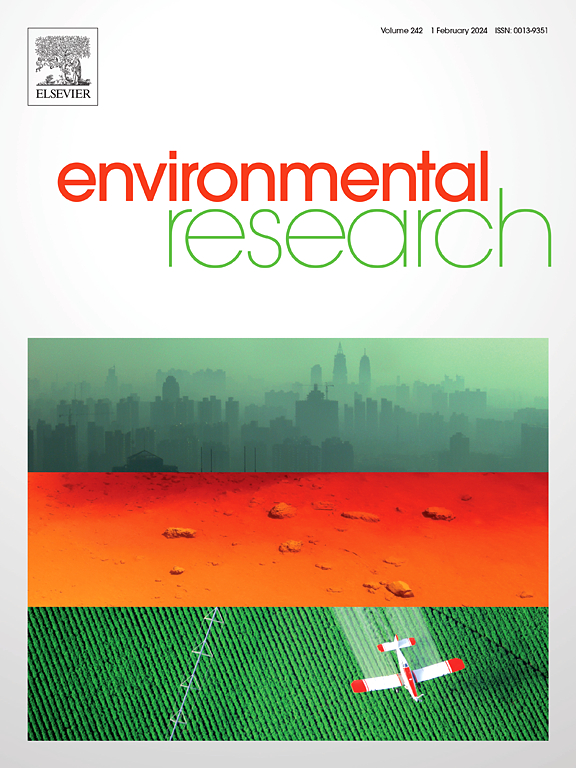城市极端温度暴露与早产:基于机器学习模型的时空风险区预测。
IF 7.7
2区 环境科学与生态学
Q1 ENVIRONMENTAL SCIENCES
引用次数: 0
摘要
本研究利用中国武汉311,972名孕妇的居住地址GPS坐标,结合日常环境数据,调查了温度对早产(PTB)的影响。我们开发了一个机器学习模型来分析环境暴露对肺结核的影响。结果表明,温度低于14°C或高于21°C、温度过度变化以及急性暴露于极端天气时,PTB风险增加。空间分析显示,热相关风险区域集中在城市热岛地区,而冷相关风险区域更为广泛。本研究为温度相关肺结核风险的时空格局提供了新的见解,为城市卫生规划和气候适应策略提供了循证建议。机器学习和空间分析的结合代表了环境健康研究方法的重大进步。本文章由计算机程序翻译,如有差异,请以英文原文为准。
Extreme urban temperature exposure and preterm birth: Spatial-temporal risk zone prediction using machine learning models
This study investigates temperature impacts on preterm birth (PTB) using residential address GPS coordinates for 311,972 pregnant women in Wuhan, China, coupled with daily environmental data. We developed a machine learning model to analyze the impact of environmental exposure on PTB. Results show PTB risks increase with temperatures below 14 °C or above 21 °C, excessive temperature variability, and acute exposure to extreme weather. Spatial analysis revealed heat-related risk zones concentrated in urban heat island areas, while cold-related risks were more widespread. This research provides novel insights into spatiotemporal patterns of temperature-related PTB risk, offering evidence-based recommendations for urban health planning and climate adaptation strategies. The integration of machine learning and spatial analysis represents a significant advancement in environmental health research methodology.
求助全文
通过发布文献求助,成功后即可免费获取论文全文。
去求助
来源期刊

Environmental Research
环境科学-公共卫生、环境卫生与职业卫生
CiteScore
12.60
自引率
8.40%
发文量
2480
审稿时长
4.7 months
期刊介绍:
The Environmental Research journal presents a broad range of interdisciplinary research, focused on addressing worldwide environmental concerns and featuring innovative findings. Our publication strives to explore relevant anthropogenic issues across various environmental sectors, showcasing practical applications in real-life settings.
 求助内容:
求助内容: 应助结果提醒方式:
应助结果提醒方式:


